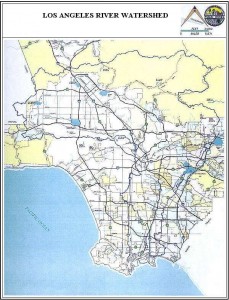In defense of “behavior modification”
Posted on | July 23, 2009 | 1 Comment
 APPEARING before the City Council yesterday arguing for a new plumbing ordinance, Los Angeles Department of Water and Power officials illustrated the fundamental difference between Them and Us.
APPEARING before the City Council yesterday arguing for a new plumbing ordinance, Los Angeles Department of Water and Power officials illustrated the fundamental difference between Them and Us.
One, they are working hard to keep us in water. Two, we their customers cannot be relied upon to worry about how this happens.
The gist of the new (and wholly laudable) water saving ordinance was that the Department of Water and Power would conserve for us by changing plumbing codes. Or, to use their phrase, this conservation solution did not require “behavior modification.”
By behavior modification, they mean our ability to change wasteful or detrimental habits on our own. Southern Californian water managers are particularly skeptical about our ability to change the way we garden.
“Behavior modification is not something you can rely on forever,” explained DWP General Manager David Nahai. What he means is that when told there is a drought, the automatic assumption by the public is that there will be an end to the drought, when the sprinklers may return to normal. “It’s like gas prices,” he said. “They go up and people drive less. They come down and people think the crisis is over.”
So as the Council duly voted for new construction to have even lower low-flow toilets, this writer duly applauded it. And while doing so, as a third generation Californian, I was also left convinced that our policies are too little, too late to save the thing that makes California the shining wonder that my grandparents found it to be in the 1920s.
That would be the Pacific Ocean.
You see, the plumbing solution offers hope for only one half of the Greater Los Angeles watershed. LADWP promises to keep us in water, but only behavior modification will change what we put into that water once it reaches us. Only behavior modification will reduce the load of pesticides and fertilizers that sink into the ground or are washed into our storm drains every day by lawn sprinklers. Without behavior modification, we are doing little to change a garden culture that is steadily poisoning our aquifers and killing our bays.
To appreciate how important behavior modification is, it helps to look at the pain in northern California at the collapse of their salmon and sturgeon populations. Sacramento was stunned last week when a UC Berkeley study on the effect of lawn chemicals that drain into the American River was associated with that collapse.
It was not a garden writer, but a Sacramento Bee editorial that carried this response, “Use less water on our lawns and driveways. Plant more native, pest-resistant plants in yards. Spray smaller quantities of these insecticides around homes. Dispose of them at household hazardous waste sites rather than pouring them down the drain.”
Maybe we citizens of Los Angeles are too many and too diverse to understand that the stewardship of our watershed depends on the actions of each and every one of us. As a result, our water company and city council are working hard to sneak good habits in behind the levers, taps and sprinkler systems.
Good for them. But if they do it at the expense of behavior modification, we will surely poison our groundwater and kill our bays and with it nullify our very reasons for flocking to this glorious place.
To be taken to the Los Angeles County Public Works Department description of the pollutants in our watershed, click on the map.
July 24, 2009 Update:
The City of Los Angeles Department of Public Works this week launched a pilot program offering free assistance to residents and businesses willing to collect rainwater for storage and use. It will cover the Jefferson area, bounded by Jefferson, La Brea, Adams and Fairfax Avenue; the Sawtelle area, bounded by Sawtelle, Pico, Barrington, and Stanwood; and the Mar Vista community. The pilot program aims to enlist 600 Los Angeles property owners in the targeted neighborhoods by fall 2009.
Residents who sign up for the program will be eligible for complimentary installations of rain barrels, downspout disconnections or planter boxes for businesses. For more information, click here.
Comments
One Response to “In defense of “behavior modification””
Leave a Reply



July 26th, 2009 @ 9:08 am
Well said. The turf-ficus-impatients landscape is not good, but it is familiar and static. Bringing average Joe’s to an appreciation of a garden with a bit of redish-brown foliage will require that they see lots and lots of good examples built. What we need is a good fad.